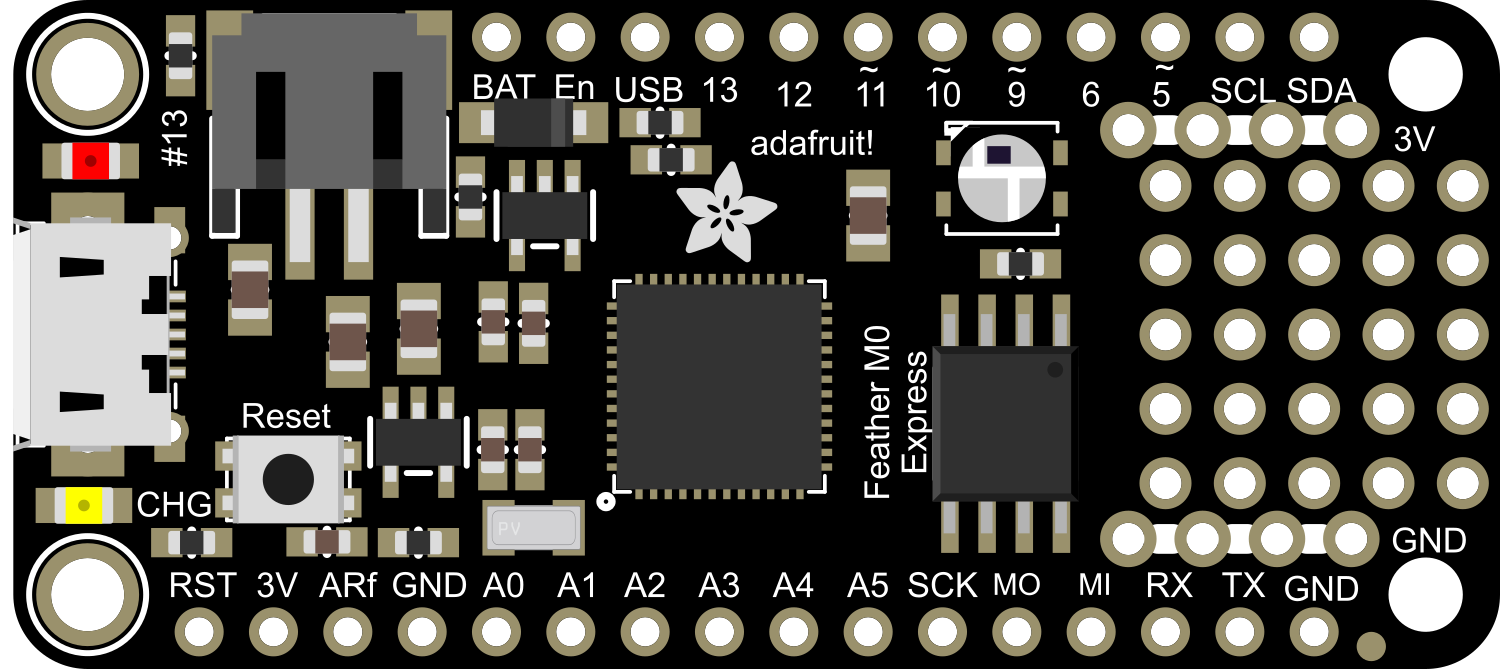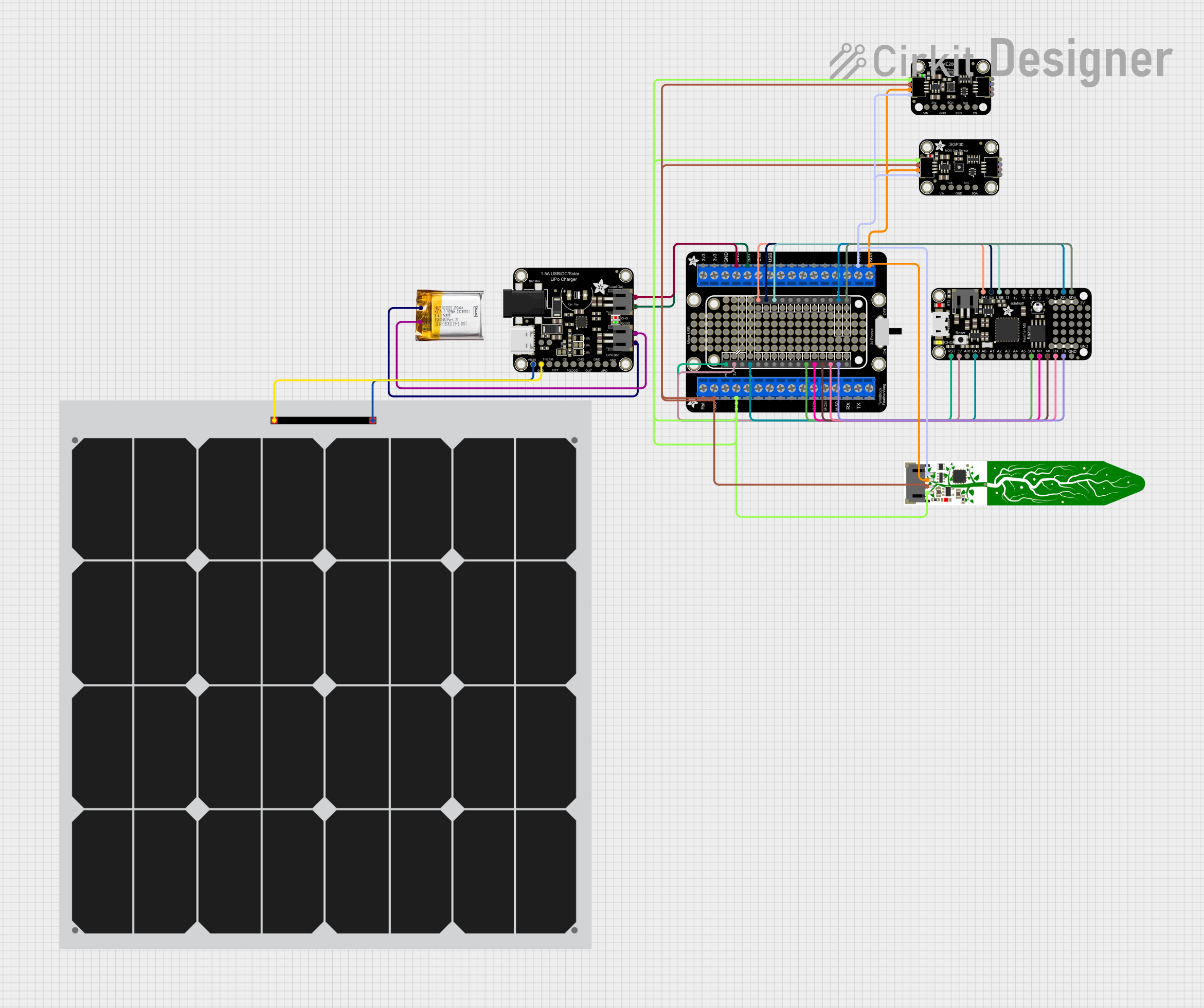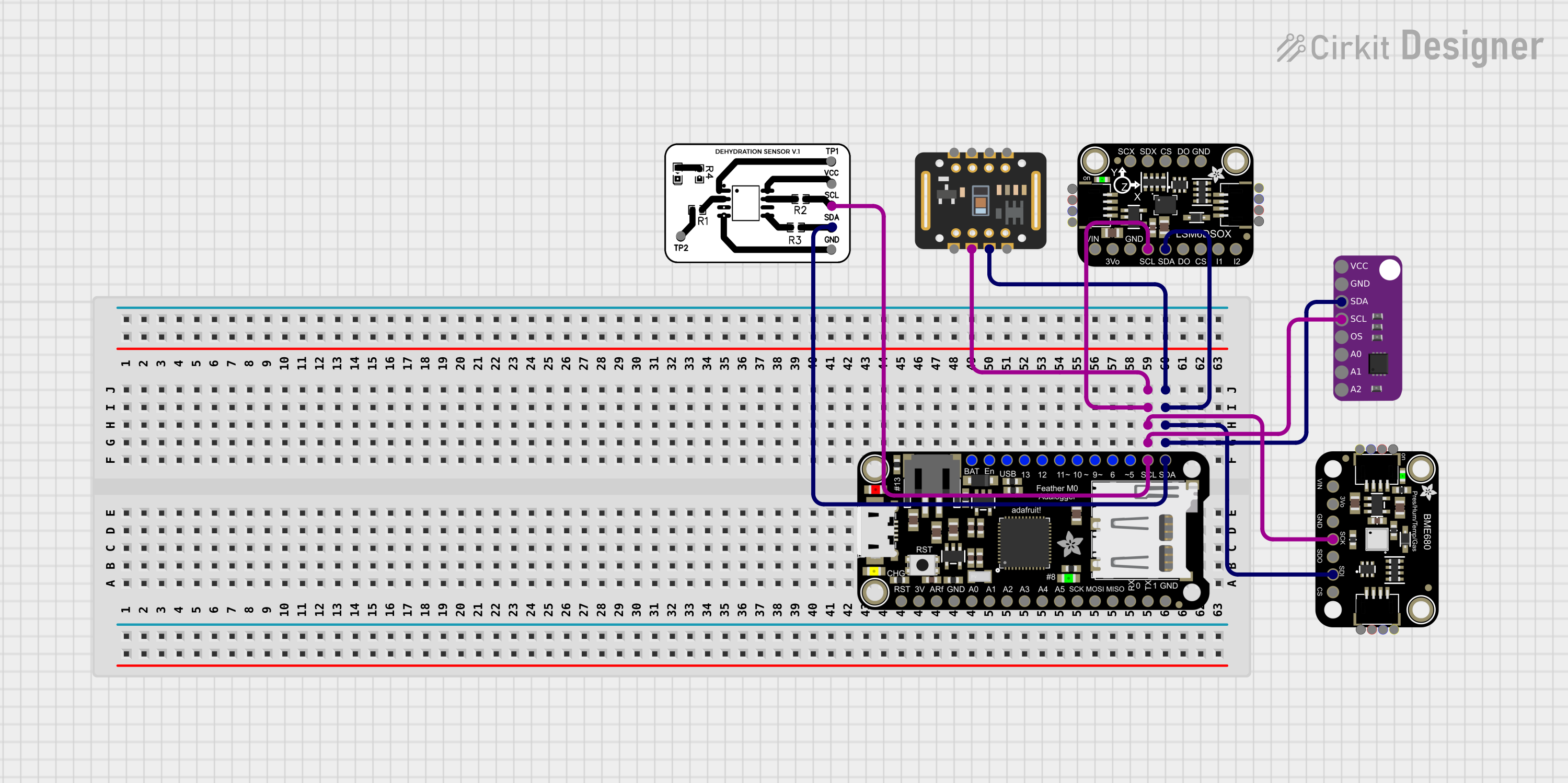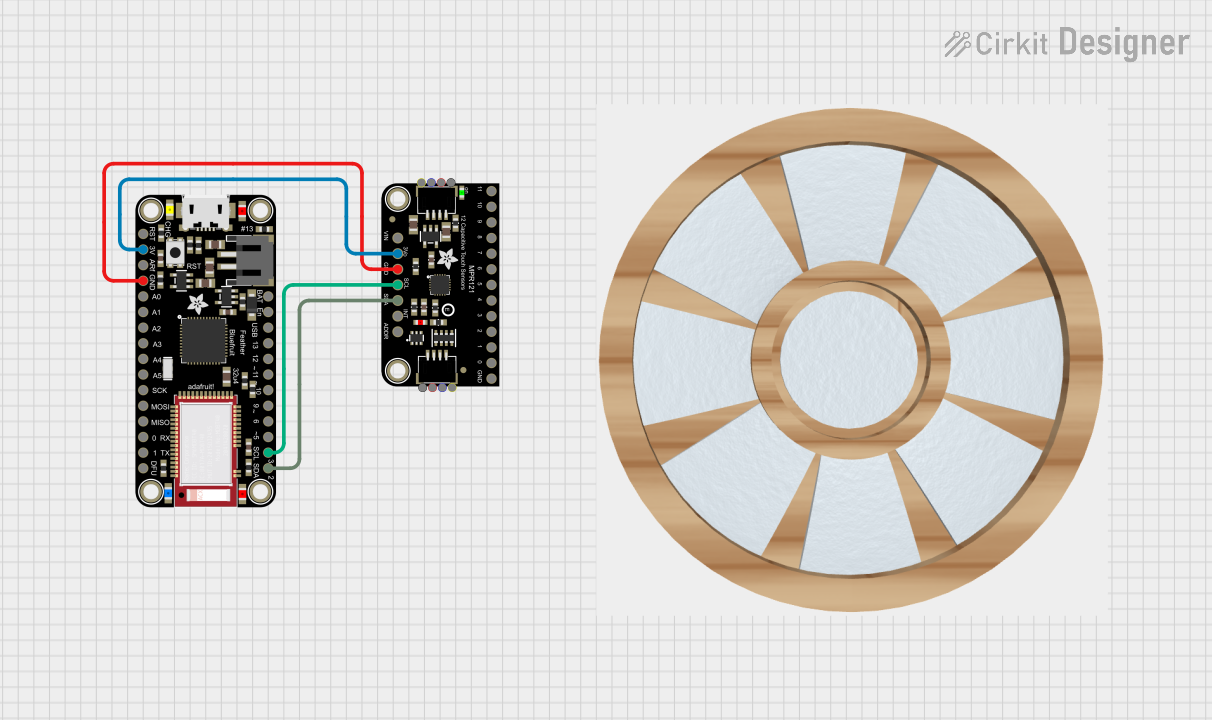
How to Use Adafruit Feather M0 Express: Examples, Pinouts, and Specs

 Design with Adafruit Feather M0 Express in Cirkit Designer
Design with Adafruit Feather M0 Express in Cirkit DesignerIntroduction
The Adafruit Feather M0 Express is a versatile and compact development board designed for makers and hobbyists. It is based on the Atmel SAMD21G18A microcontroller and is equipped with a 32-bit ARM Cortex-M0+ processor. With 256 KB of flash memory and 32 KB of SRAM, it provides ample space for complex programs and data handling. The board's built-in USB support allows for easy programming and serial communication, while the microSD card slot enables additional storage for data logging or file storage. The Feather M0 Express is commonly used in projects requiring a powerful yet small microcontroller, such as wearable devices, portable instruments, and IoT applications.
Explore Projects Built with Adafruit Feather M0 Express

 Open Project in Cirkit Designer
Open Project in Cirkit Designer
 Open Project in Cirkit Designer
Open Project in Cirkit Designer
 Open Project in Cirkit Designer
Open Project in Cirkit Designer
 Open Project in Cirkit Designer
Open Project in Cirkit DesignerExplore Projects Built with Adafruit Feather M0 Express

 Open Project in Cirkit Designer
Open Project in Cirkit Designer
 Open Project in Cirkit Designer
Open Project in Cirkit Designer
 Open Project in Cirkit Designer
Open Project in Cirkit Designer
 Open Project in Cirkit Designer
Open Project in Cirkit DesignerTechnical Specifications
Key Technical Details
- Microcontroller: Atmel SAMD21G18A
- Processor: 32-bit ARM Cortex-M0+ running at 48 MHz
- Flash Memory: 256 KB
- SRAM: 32 KB
- Operating Voltage: 3.3V
- I/O Pins: 20 GPIO pins
- Analog Inputs: 6 12-bit ADC channels
- Analog Outputs: 1 10-bit DAC
- PWM: Yes, available on certain pins
- UART: 1
- I2C: 1
- SPI: 1
- External Interrupts: Available on all pins
- DC Current per I/O Pin: 7 mA
- USB: Micro-USB interface for programming and power
- Battery Charging: Built-in charging circuit for 3.7V LiPo batteries
- Dimensions: 51mm x 23mm x 8mm (without headers)
Pin Configuration and Descriptions
| Pin # | Function | Description |
|---|---|---|
| 1 | GND | Ground |
| 2 | BAT | Battery positive voltage (for LiPo batteries) |
| 3 | EN | Enable pin for the 3.3V regulator |
| 4 | USB | USB positive voltage from the micro-USB port |
| 5-12 | Digital I/O | Digital input/output pins, PWM capable on some |
| 13-18 | Analog Inputs | Analog input pins, also digital I/O capable |
| 19 | AREF | Analog reference voltage for ADC |
| 20 | DAC | Digital-to-Analog Converter output |
| 21 | SCK | SPI clock |
| 22 | MISO | SPI Master In Slave Out |
| 23 | MOSI | SPI Master Out Slave In |
| 24 | SDA | I2C Data |
| 25 | SCL | I2C Clock |
| 26 | RX | UART Receive |
| 27 | TX | UART Transmit |
| 28 | RST | Reset pin |
| 29 | 3V | 3.3V output from the regulator |
| 30 | 13 | Built-in LED, also digital I/O pin |
Usage Instructions
Integrating with a Circuit
To use the Adafruit Feather M0 Express in a circuit:
- Connect the board to your computer using a micro-USB cable.
- Ensure that the board's drivers and the Arduino IDE are installed on your computer.
- Select the correct board from the Tools > Board menu in the Arduino IDE.
- Connect external components to the GPIO pins as required for your project.
Important Considerations and Best Practices
- Power Supply: Ensure that the power supply is within the recommended voltage range to prevent damage.
- I/O Pin Limits: Do not exceed the maximum current rating for the I/O pins.
- Static Discharge: Handle the board with care to avoid static discharge that can damage the microcontroller.
- Battery Charging: When using a LiPo battery, ensure it is connected correctly to the BAT pin and never charge the battery unattended.
Example Code for Arduino UNO
Here is a simple example of how to blink the built-in LED on the Adafruit Feather M0 Express using the Arduino IDE:
// Define the built-in LED pin
#define LED_BUILTIN 13
void setup() {
// Initialize the LED pin as an output
pinMode(LED_BUILTIN, OUTPUT);
}
void loop() {
// Turn the LED on
digitalWrite(LED_BUILTIN, HIGH);
// Wait for one second
delay(1000);
// Turn the LED off
digitalWrite(LED_BUILTIN, LOW);
// Wait for one second
delay(1000);
}
Troubleshooting and FAQs
Common Issues
- Board Not Recognized: Ensure that the correct drivers are installed and the USB cable is functioning.
- Sketch Not Uploading: Check the selected board and port in the Arduino IDE. Press the reset button on the board and try again.
- Incorrect Behavior: Verify that the wiring is correct and that the code corresponds to the connected hardware.
Solutions and Tips
- Driver Installation: Visit the Adafruit website for the latest drivers and installation guides.
- Quality USB Cable: Use a high-quality USB cable capable of data transfer, not just charging.
- Reset Button: Use the reset button to enter bootloader mode if the board is not responding.
FAQs
Q: Can I power the Feather M0 Express with a battery? A: Yes, you can use a 3.7V LiPo battery connected to the BAT pin.
Q: What is the maximum voltage that can be applied to the analog pins? A: The maximum voltage for the analog pins is 3.3V.
Q: Can I use the Feather M0 Express with the Arduino IDE? A: Yes, the Feather M0 Express is fully compatible with the Arduino IDE.
Q: How do I charge a connected LiPo battery? A: The Feather M0 Express has a built-in charging circuit. Simply connect the board to a USB power source while the battery is connected to the BAT pin.